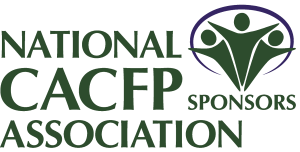Meal Pattern Minute: Identifying Whole Grain-Rich Method 4, Part 1
April 28, 2023
In the Child and Adult Care Food Program, there are six different options to determine if a grain product meets the whole grain-rich criteria. Sometimes it is challenging to determine which method will work best for your needs. So, what if you have a packaged product and you want to determine if the food item is whole grain-rich?
Well, it only takes a minute to find out! Listen to our nutrition education specialist, Isabel Ramos-Lebron, MS, RDN, LD, to learn more on how to use this fourth method to determine is whole grain-rich by reading the ingredient list using the Rule of Three.
For more information on whole grain-rich, refer to USDA Memo Code: CACFP 09-2018, Grain Requirements in the Child and Adult Care Food Program: Questions and Answers:
- FNS developed the Rule of Three in recognition that CACFP operators purchase food differently than School Meal Program operators, as CACFP operators often shop in retail environments and may not have access to manufacturers' product formulation statements or products specially formulated for School Meal Programs.
- To meet the Rule of Three as a whole grain-rich product, the first ingredient (or second after water) must be whole grain, and the next two grain ingredients (if any) must be whole grains, enriched grains, bran, or germ. Any grain derivatives (by-products of grains) may be disregarded. Any non-creditable grain ingredients (e.g., flours that are not enriched or whole) that are labeled as 2 percent or less of product weight are considered insignificant and may also be disregarded (see below for a list of these ingredients).
- When applying the Rule of Three to the grain portion of mixed dishes, such as pizza crusts and tortillas for burritos, the first grain ingredient must be whole grain and the next two grain ingredients (if any) must be whole grains, enriched grains, bran, or germ.
- Buyers may wish to refer to this list of ingredients while reviewing grain product labels when using the Rule of Three. Please note that this list is not meant to be exhaustive, and there may be other items that qualify that are not listed below.
- Examples of Rule of Three:
- Example 1: An English muffin's ingredient list says: “whole wheat flour, water, enriched wheat flour, wheat starch, yeast, sugar, and salt.” This product is creditable as a whole grain-rich product in the CACFP using the Rule of Three because the first ingredient (whole wheat flour) is a whole grain, and the second grain ingredient (enriched wheat flour) is an enriched grain. The wheat starch is a grain derivative and therefore does not count as a grain ingredient in CACFP. Therefore, this product meets the Rule of Three based on the only two grain ingredients.
- Example 2: A corn chip's ingredient list reads: “whole corn, vegetable oil, salt, cheddar cheese, maltodextrin, wheat flour, Romano cheese, whey protein concentrate.” This product is not creditable as a whole grain-rich product for CACFP using the Rule of Three, because although the first ingredient is a whole grain (whole corn), the next grain ingredient is unenriched wheat flour. However, this item is creditable as a grain that is not being served as a whole grain-rich item because the first grain is a whole grain (See Attachment 1).
Want to know what constitutes a whole grain? Check out this resource, Identifying Grain Ingredients.
More Whole Grain-Rich Resources
Need meal pattern resources to help you guide you on determining whole grain-rich products? Check out the free materials below to get your started!
- Adding Whole Grains to Your Child and Adult Care Food Program Menu
- Identifying Whole Grain-Rich Guide
- How to Spot Whole Grain-Rich Foods for the Child and Adult Care Food Program
Whole Grain-Rich Recipes
Want to share this video on Facebook? Click here, and then you'll find three icons along the right side of the screen. Click on the arrow, and you'll be able to choose whether you want to share it to your feed or to a group. You can also include a short note about why this Meal Pattern Minute is so important! Click on the "Post" button when you're finished, and that's it!
